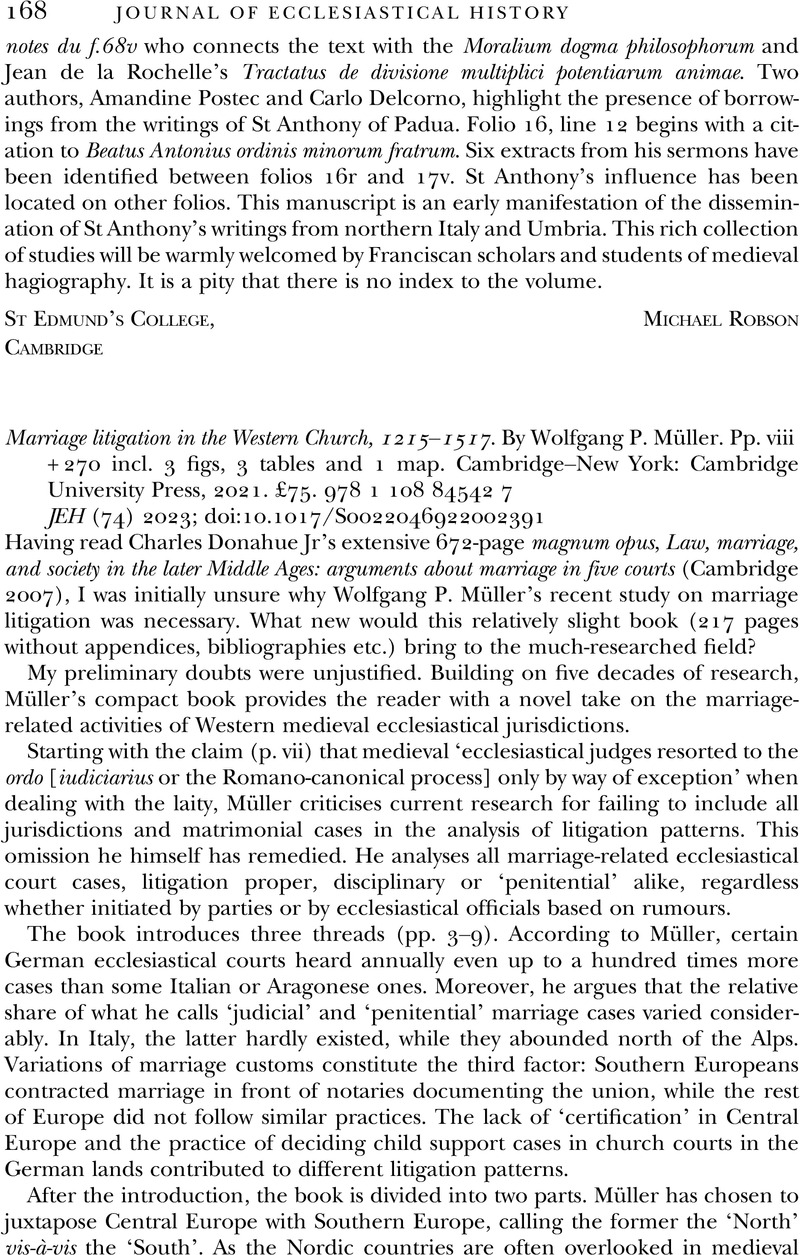No CrossRef data available.
Article contents
Marriage litigation in the Western Church, 1215–1517. By Wolfgang P. Müller. Pp. viii + 270 incl. 3 figs, 3 tables and 1 map. Cambridge–New York: Cambridge University Press, 2021. £75. 978 1 108 84542 7
Review products
Marriage litigation in the Western Church, 1215–1517. By Wolfgang P. Müller. Pp. viii + 270 incl. 3 figs, 3 tables and 1 map. Cambridge–New York: Cambridge University Press, 2021. £75. 978 1 108 84542 7
Published online by Cambridge University Press: 29 December 2022
Abstract
An abstract is not available for this content so a preview has been provided. Please use the Get access link above for information on how to access this content.

- Type
- Reviews
- Information
- Copyright
- Copyright © Cambridge University Press 2022



